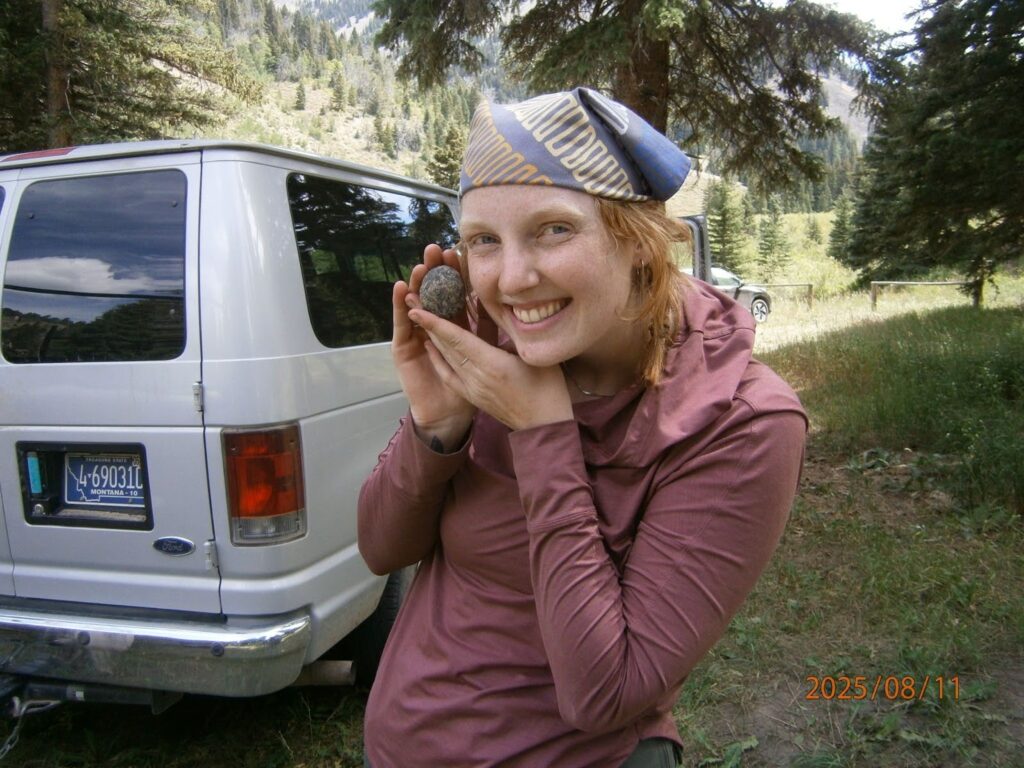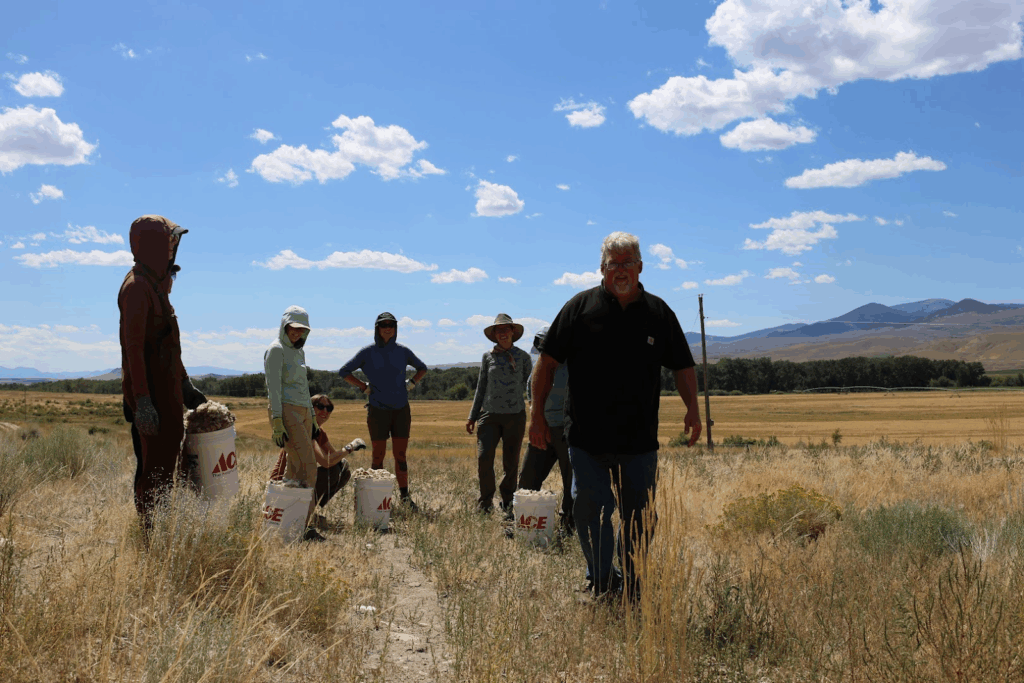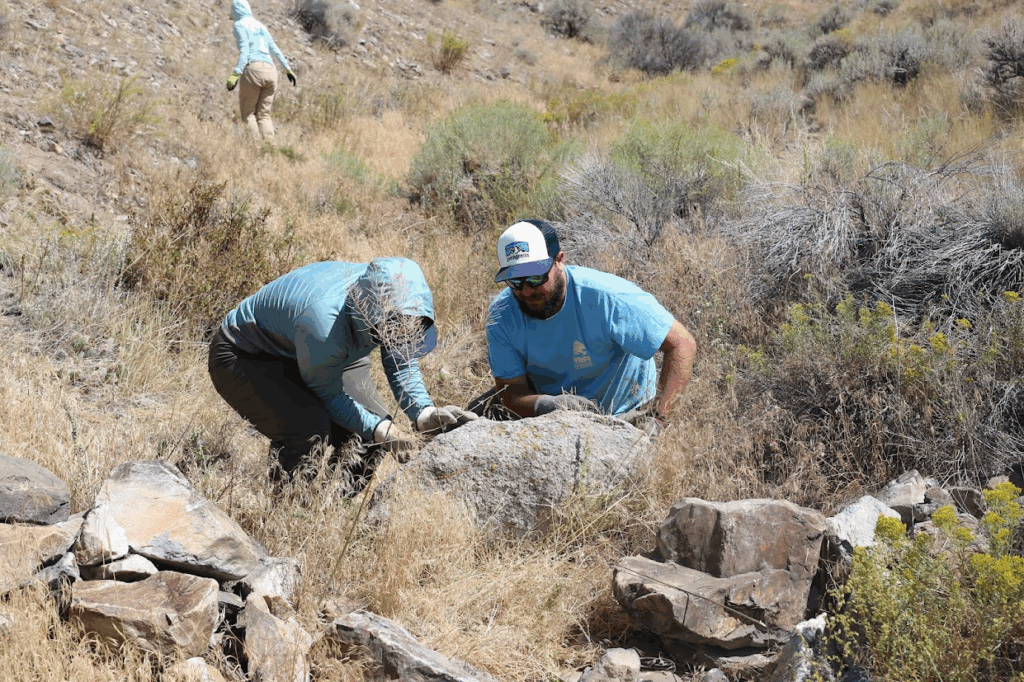Our first interaction with Eric Kalsta was waving at a stranger on the road in the coolest, most compact, one-person ATV I had ever seen. Lo and behold, that ATV followed us to the Kalsta Ranch just up the road. Once we’d established that this stranger was, in fact, our host/guest speaker/restoration boss for the day, we drove down a gravel road to where the work project lay in wait.

Eric introduced us to two of the many restoration projects on the ranch. The first project was an effort to outcompete the non-native Cheatgrass that had taken over a hillside by using another non-native, Bozoiski grass, which would then, in turn, be outcompeted by the native, Great Basin Wild Rye. We went to work collecting seeds that would then be mixed with sheep’s wool and spread on high erosion areas of the land. Listening to Eric talk about his experience with the Cheatgrass and how his restoration approach started with observing the land and then trying something to improve it was quite inspiring. He inspired a newfound sense of agency in me: I, too, could observe my land and attempt restoration without hiring an environmental consultant or professional in the field.

We stripped seed heads from the Bozoiski and the Great Basin Wild Rye in groups and shared stories and laughs while working. There was something ancestral about being with other people, using our hands to harvest seeds to then spread them on the same land in hopes of improving it. Eric brought over wool from his sheep, and we mixed in the harvested seed and began on the second project: rock weirs. Rock weirs are a low-height dam used to control and slow the flow of water while still letting it pass. This was perhaps my favorite part because I got to puzzle through the best way to fit the loose rocks together, as well as ogle at the many different rocks present as products of an extinct volcano and glaciation. There was the risk of water blowing out the weirs, and so I also got to imagine myself as a raging stream of water trying to get past the rocks with all of my power. This, of course, manifested as me kicking the uphill side of the weir to make sure it would hold and only getting a few toe stubs and prickly pear spine pokes in the process.

As we finished spreading the seeded wool over the land and observed our work, we felt a great sense of accomplishment, even if we had only done a comparatively small amount of work. We had actively taken part in invasive species control, erosion control, and land stewardship, and it felt good. As we wiped the sweat from our eyes and said goodbye to Eric, he seemed grateful for the work we had done, but I could see on his face the weight of land management work still to come…or maybe he was just still peeved at his guard dogs, who he shared had taken a hike with his herd toward the highway that morning. Who’s to say, really?
One Reply to “Using Our Present Observations for Future Prosperity by Allison Struemke”
Comments are closed.
Great blog post, Al! I can sense your enthusiasm in your writing. May you continue to observe your environment and make plans to have an impact in your own community or own piece of ancestral land. Good luck!